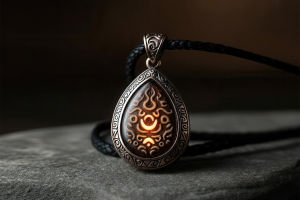Lykkers, what if you could stroll through Monet’s water lily pond at Giverny? Or touch the textured brushstrokes of Van Gogh’s Starry Night? Virtual reality (VR) is turning these fantasies into tangible encounters.
No longer confined by geography or velvet ropes, art lovers now explore immersive digital realms where masterpieces transform into living worlds.
Visitors can don VR headsets and immerse themselves in an artist's world, elevating the act of viewing art beyond simple observation.The "Sorolla Through Light" exhibition at Madrid’s Royal Palace proves it’s possible—visitors don VR headsets and dissolve into the Spanish master’s sun-drenched seascapes.
Sorolla's Living Legacy
The pioneering Sorolla exhibition showcases 24 hidden gems, but its true innovation lies beyond physical canvases. With ultra-HD headsets, viewers step onto 1909 Valencia beaches—feeling virtual sunlight as Sorolla’s Children at the Beach materializes around them. Haptic gloves simulate the artist’s brush grip, while spatial audio captures crashing waves. This isn’t viewing art; it’s inhabiting the artist’s sensory universe.
Beyond Visual Boundaries
VR engages senses traditional galleries ignore. At London’s Tate Modern, a Modigliani VR experience lets users sculpt virtual clay alongside the artist’s spectral presence. In Tokyo’s TeamLab Borderless, visitors walk through digital waterfalls that react to their touch. New scent-emitting headsets even release ocean brine or oil-paint fumes during Van Gogh experiences.
Democratizing Masterpieces
Accessibility is VR’s superpower. The Smithsonian’s Open Access program streams VR tours of the National Portrait Gallery to rural schools. The Louvre’s Mona Lisa: Beyond the Glass app lets millions bypass crowds. For mobility-impaired art lovers, VR eliminates physical barriers—enabling "climbs" up the Guggenheim’s spiral or "steps" into Egypt’s tomb chambers.
Artists as Digital Alchemists
Visionaries like Refik Anadol use VR as their primary canvas. In Wind & Data Paintings, he uses real-time wind data to generate dynamic, ever-evolving digital artworks. Painter George Rouy creates VR environments where figures melt and reform based on viewer proximity. These aren’t replicas—they’re born-digital artworks demanding new critical frameworks.
Curating New Dimensions
Museums leverage VR for radical storytelling. The Dalí Museum’s Dreams of Dalí drops users inside melting clocks and lobster telephones. The Frida Kahlo Retrospective rebuilds Casa Azul’s courtyard, where animated monarchs flutter from her self-portraits. Each becomes a narrative time machine, revealing context no wall label could convey.
Tech Revolution
Cutting-edge hardware fuels this evolution:
- 8K headsets eliminate pixelation
- Eye-tracking adjusts depth in real-time
- Haptic suits let users feel brushstroke textures
- Photogrammetry scans sculptures into interactive 3D models
Future Frontiers
Emerging trends are reshaping art’s DNA:
- Holographic artists guiding live VR tours from studios
- AI co-creation tools letting viewers remix brushstrokes
- NFT-VR galleries displaying digital collections
- Neuro-responsive VR adapting to brainwave engagement
Ethical Dimensions
As VR reshapes art consumption, questions arise: Can digital experiences replace the aura of originals? How to preserve cultural context when artifacts become manipulatable pixels? Institutions like UNESCO now develop VR ethics frameworks to protect artistic integrity while embracing innovation.
The journey through art is only beginning; engaging with VR can transform this experience into meaningful adventure. So, how will this new lens influence your appreciation of art? Embrace technology, and immerse yourself in the creativity waiting to be discovered!


